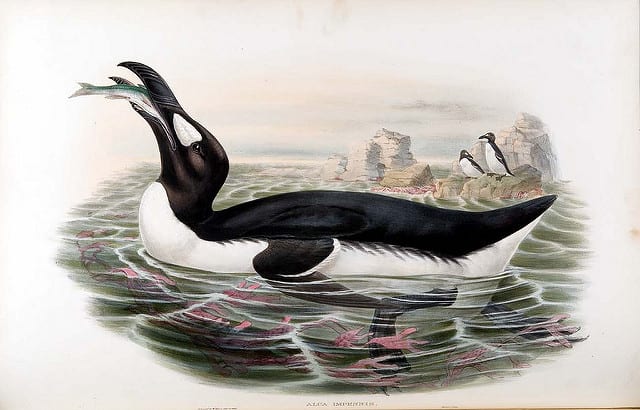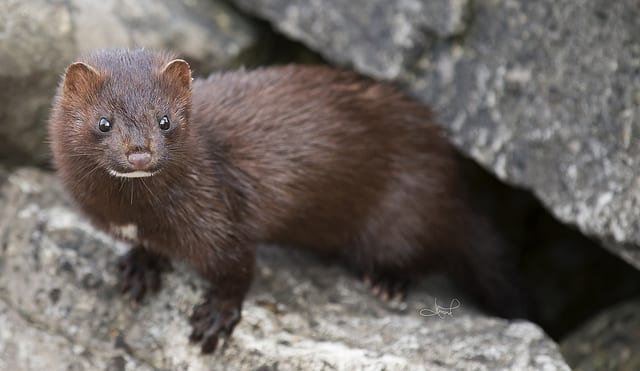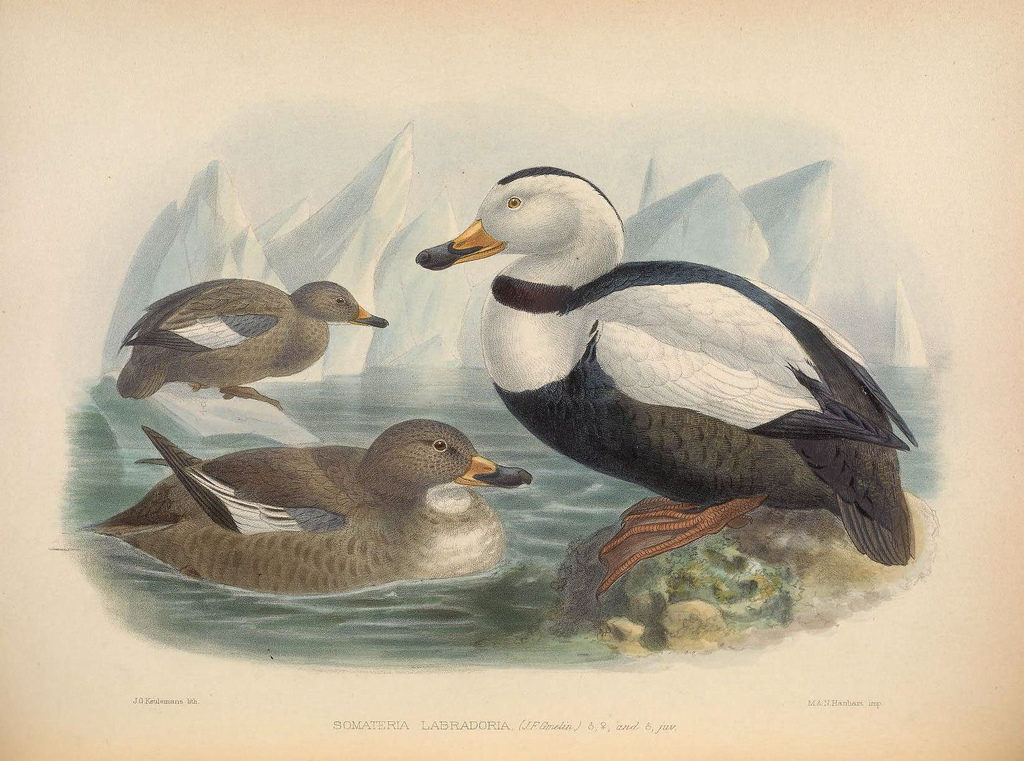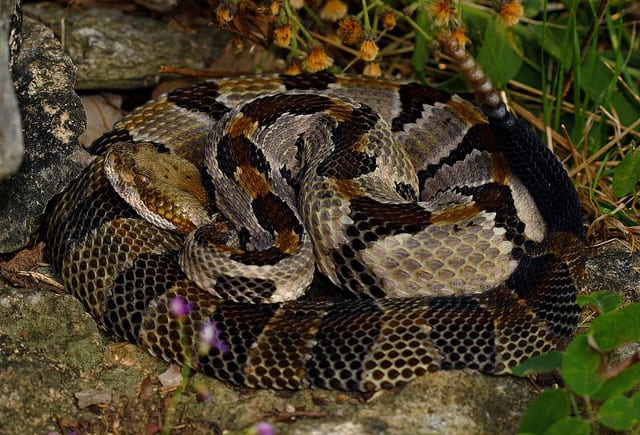
Maine is home to some incredible wildlife. From Moose, Canada Lynx, and Black Bear in our northern forests to Gray Seals, Northern Right Whales, and Atlantic Puffins in the Gulf of Maine, we’re surrounded by fascinating creatures.
But not all of them are still around. Here are five animals that are no longer found in Maine.
Sea Mink (Neovison macrodon)
The Sea Mink was a large marine mammal, closely related to the American Mink, which lived only in the Gulf of Maine. Not a whole lot is known about this species — the only remains we have are bone fragments found in Native American shell middens — but early fur trappers reported that the Sea Mink was larger and fatter — and stinkier — than the American Mink. However, that larger size meant they were a prime target, and unregulated trapping meant that Sea Mink were a rare sight as early as 1860. The last known Sea Mink in Maine was killed on an island near Jonesport in 1880.

Labrador Duck (Camptorhynchus labradorius)
This beautiful black and white sea duck bred in northeastern Canada but spent its winters along the Maine coast, as eiders, scoters, Bufflehead, and other sea ducks continue to do. The Labrador Duck fed primarily on mussels, and had an oddly-soft bill to help it probe for mollusks in the mud. This species has the unfortunate distinction of being one of the first to go extinct after European colonization of America — it was not seen after 1878 — but the reasons are not totally clear. It didn’t taste good and so wasn’t popular with hunters, but changes to coastal habitat, overfishing of mussels and eggs, and the feather trade are all seen as contributing factors in the bird’s disappearance.

Woodland Caribou (Rangifer tarandus caribou)
Did you ever wonder where the town of Caribou, Maine got its name? From the herds of Woodland Caribou that used to roam northern Maine, that’s where! Woodland Caribou were uniquely suited to the old growth forests and deep snow of the Maine woods, where they fed primarily on lichens. Unfortunately, they were large and easy to hunt, making them prime targets for unregulated hunting. The loss of old growth forests across the state, which were necessary to provide lichens for the caribou, also contributed to the decline of the species, which was last seen in Maine on the saddle of Mt. Katahdin in 1908.

Timber Rattlesnake (Crotalus horridus)
Maine is currently one of the only states in the lower 48 that is not home to rattlesnakes, though it wasn’t always this way. The impressive Timber Rattlesnake used to be found in the rugged mountains of Western Maine, though likely always in very low numbers. Timber Rattlesnakes are venomous predators of small mammals such as shrews, mice, rats, squirrels, and rabbits, though their powerful bites can kill humans. Rattlesnakes were extirpated from Maine probably before the turn of the 20th century.

Great Auk (Pinguinus impennis)
The Great Auk isn’t closely related to penguins, but it sure looked like one. This large flightless seabird once ranged all across the North Atlantic where it lived a life similar to Atlantic Puffins or Razorbills: breeding on small rocky islands in the spring and summer and spreading out on the open ocean to find food in winter. Unfortunately, the bird was easy prey for hunters who ate their meat and eggs, and used their down for pillows. Great Britain banned the killing of Great Auks as early as 1794, but persecution continued. The last known Great Auks were killed on an island off Iceland in 1844.

The connecting thread between each of these unfortunate stories is human impact. Thankfully, we’ve gotten better about understanding our impact on wildlife, and laws like the Endangered Species Act and Migratory Bird Treaty Act have helped protect thousands of species avoid a similar fate. We need to ensure the continuation of these laws and others in order to keep Maine full of incredible wildlife.
